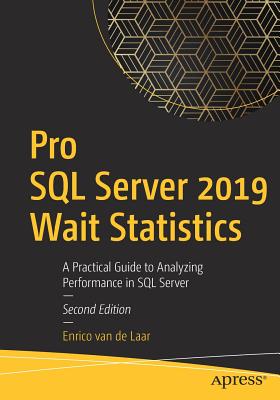Data Modeling for the Business: A Handbook for Aligning the Business with IT using High-Level Data Models (Paperback)
暫譯: 商業數據建模:使用高階數據模型對齊商業與IT的手冊(平裝本)
Steve Hoberman, Donna Burbank, Chris Bradley
- 出版商: Take IT With You(r)
- 出版日期: 2009-04-01
- 售價: $1,580
- 貴賓價: 9.5 折 $1,501
- 語言: 英文
- 頁數: 288
- 裝訂: Paperback
- ISBN: 0977140075
- ISBN-13: 9780977140077
海外代購書籍(需單獨結帳)
買這商品的人也買了...
-
 C# 精要 (C# Essentials)
C# 精要 (C# Essentials)$480$379 -
 深入淺出設計模式 (Head First Design Patterns)
深入淺出設計模式 (Head First Design Patterns)$880$695 -
 設計嵌入式硬體 (Designing Embedded Hardware, 2/e)
設計嵌入式硬體 (Designing Embedded Hardware, 2/e)$760$600 -
 Linux C 函式庫詳解辭典
Linux C 函式庫詳解辭典$550$435 -
 精通 Shell Scripting (Classic Shell Scripting)
精通 Shell Scripting (Classic Shell Scripting)$620$490 -
 Web Data Mining: Exploring Hyperlinks, Contents, and Usage Data 2/e(Hardcover)
Web Data Mining: Exploring Hyperlinks, Contents, and Usage Data 2/e(Hardcover)$2,480$2,356 -
 深入淺出統計學 (Head First Statistics)
深入淺出統計學 (Head First Statistics)$980$774 -
 Windows 7 攻略一本通
Windows 7 攻略一本通$450$383 -
 深入淺出 Ajax (Head First Ajax)
深入淺出 Ajax (Head First Ajax)$680$537 -
 Windows 7 使用手冊
Windows 7 使用手冊$399$315 -
 大話儲存-網路儲存系統原理精解與最佳實踐
大話儲存-網路儲存系統原理精解與最佳實踐$550$468 -
 深入淺出網路管理 (Head First Networking)
深入淺出網路管理 (Head First Networking)$680$537 -
 網站入侵與腳本攻防修煉
網站入侵與腳本攻防修煉$580$493 -
 程式之美-微軟技術面試心得【精裝限量版】
程式之美-微軟技術面試心得【精裝限量版】$550$468 -
 Adobe AIR 完整入門與開發實錄-使用 Flex / Flash / Ajax 開發 AIR 應用
Adobe AIR 完整入門與開發實錄-使用 Flex / Flash / Ajax 開發 AIR 應用$520$442 -
 Google Android SDK 開發範例大全 2
Google Android SDK 開發範例大全 2$890$757 -
 ASP.NET 4.0 專題實務-使用 C#
ASP.NET 4.0 專題實務-使用 C#$750$593 -
 Entity Framework 與 LINQ 開發實戰
Entity Framework 與 LINQ 開發實戰$590$502 -
 正確學會 Dreamweaver CS5 的 16 堂課
正確學會 Dreamweaver CS5 的 16 堂課$520$411 -
 Microsoft Office 2010 非常 Easy
Microsoft Office 2010 非常 Easy$520$411 -
 軟體構築美學:當專案團隊遇上失控程式,最真實的解決方案 (Brownfield Application Development in .Net)
軟體構築美學:當專案團隊遇上失控程式,最真實的解決方案 (Brownfield Application Development in .Net)$650$553 -
 設計模式之禪
設計模式之禪$550$435 -
 網站開發新路線-jQuery 核心詳解與實踐應用
網站開發新路線-jQuery 核心詳解與實踐應用$520$442 -
 App 程式設計入門-iPhone、iPad
App 程式設計入門-iPhone、iPad$450$356 -
 掌握 C# 4.0 設計概要
掌握 C# 4.0 設計概要$490$417
商品描述
Whether you are a businessperson or an IT professional, you can be the hero in each of these and hundreds of other scenarios by building a High-Level Data Model. The High-Level Data Model is a simplified view of our complex environment. It can be a powerful communication tool of the key concepts within our application development projects, business intelligence and master data management programs, and all enterprise and industry initiatives.
Learn about the High-Level Data Model and master the techniques for building one, including a comprehensive ten-step approach and hands-on exercises to help you practice topics on your own. In this book, we review data modeling basics and explain why the core concepts stored in a high-level data model can have significant business impact on an organization. We explain the technical notation used for a data model and walk through some simple examples of building a high-level data model. We also describe how data models relate to other key initiatives you may have heard of or may be implementing in your organization.
This book contains best practices for implementing a high-level data model, along with some easy-to-use templates and guidelines for a step-by-step approach. Each step will be illustrated using many examples based on actual projects we have worked on. One example spans an entire chapter and will allow you to practice building a high-level data model from beginning to end, and then compare your results to ours. Building a high-level data model following the ten step approach you will read about is a great way to ensure you will retain the new skills you learn in this book.
As is the case in many disciplines, using the right tool for the right job is critical to the overall success of your high-level data model implementation. To help you in your tool selection process, there are several chapters dedicated to discussing what to look for in a high-level data modeling tool and a framework for choosing a data modeling tool, in general.
This book concludes with a real-world case study that shows how an international energy company successfully used a high-level data model to streamline their information management practices and increase communication throughout the organization - between both businesspeople and IT.
Data modeling is one of the under-exploited, and potentially very valuable, business capabilities that are often hidden away in an organizations Information Technology department. Data Modeling for the Business highlights both the resulting damage to business value, and the opportunities to make things better. As an easy-to follow and comprehensive guide on the why and how of data modeling, it also reminds us that a successful strategy for exploiting IT depends at least as much on the information as the technology.
Chris Potts, Corporate IT Strategist and Author of fruITion: Creating the Ultimate Corporate Strategy for Information Technology
The authors of Data Modeling for the Business do a masterful job at simply and clearly describing the art of using data models to communicate with business representatives and meet business needs. The book provides many valuable tools, analogies, and step-by-step methods for effective data modeling and is an important contribution in bridging the much needed connection between data modeling and realizing business requirements.
Len Silverston, author of The Data Model Resource Book series
商品描述(中文翻譯)
你曾經嘗試讓商業人士和IT部門就新應用程式的專案範圍達成共識嗎?或者試著讓行銷和銷售部門就目標受眾達成一致?又或者試著讓新團隊成員了解你資料倉儲中的數百個資料表——而不讓他們打瞌睡?
無論你是商業人士還是IT專業人員,你都可以在這些情境以及其他數百種情境中成為英雄,方法就是建立高層次資料模型(High-Level Data Model)。高層次資料模型是我們複雜環境的簡化視圖。它可以成為我們應用程式開發專案、商業智慧和主資料管理計畫以及所有企業和行業倡議中關鍵概念的強大溝通工具。
了解高層次資料模型並掌握建立高層次資料模型的技術,包括全面的十步驟方法和實作練習,幫助你自行練習相關主題。在本書中,我們回顧資料建模的基本概念,並解釋為什麼高層次資料模型中儲存的核心概念對組織的商業影響重大。我們解釋用於資料模型的技術符號,並逐步展示建立高層次資料模型的一些簡單範例。我們還描述資料模型如何與你可能聽過或正在實施的其他關鍵倡議相關聯。
本書包含實施高層次資料模型的最佳實踐,以及一些易於使用的範本和逐步方法的指導。每一步都將使用我們實際專案的許多範例來說明。其中一個範例跨越整個章節,將允許你從頭到尾練習建立高層次資料模型,然後將你的結果與我們的結果進行比較。按照你將閱讀到的十步驟方法建立高層次資料模型,是確保你能夠保留在本書中學到的新技能的好方法。
在許多學科中,為正確的工作使用正確的工具對於高層次資料模型實施的整體成功至關重要。為了幫助你在工具選擇過程中,有幾個章節專門討論在高層次資料建模工具中應該尋找什麼,以及一般選擇資料建模工具的框架。
本書以一個真實案例研究作結,展示了一家國際能源公司如何成功使用高層次資料模型來簡化其資訊管理實踐,並增進整個組織內部——商業人士和IT部門之間的溝通。
資料建模是許多組織的資訊科技部門中一種未被充分利用且潛在非常有價值的商業能力。商業資料建模突顯了對商業價值造成的損害,以及改善的機會。作為一本易於理解且全面的資料建模指南,它也提醒我們,成功利用IT的策略至少同樣依賴於資訊而非技術。
Chris Potts,企業IT策略師及fruITion: Creating the Ultimate Corporate Strategy for Information Technology的作者
商業資料建模的作者們巧妙地簡單明瞭地描述了使用資料模型與商業代表溝通並滿足商業需求的藝術。這本書提供了許多有價值的工具、類比和有效資料建模的逐步方法,是在資料建模與實現商業需求之間架起所需連結的重要貢獻。
Len Silverston,The Data Model Resource Book系列的作者




























